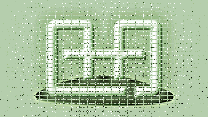What is the best note with which to introduce the keyboard and notation to a beginning piano student? Tradition and habit offer middle C as the automatic choice, and at first sight it has some clear advantages. After all, it’s the one note that you can play with either hand in the home position — at least when the home position is defined by having both thumbs on middle C. And that’s not all. Middle C is pivotal for notation, the bridge between the treble and bass staves, and a gateway to both. On the page, it’s easy to spot because there’s a line through it. And it’s just about right in the middle!
There are problems with middle C, however, that might send us in search of another candidate. To begin with, it’s the one note about which you have to worry which hand to use or which staff it’s on. Confusingly, it is drawn differently from the other notes. Even worse, it is not especially easy to locate on the keyboard: the white note to the left of the middle pair of black notes. Children’s often-dodgy sense of the difference between right and left can delay progress for significant minutes as this threshold is crossed.
But if not C, then what? Where else to turn?
 It’s actually not a hard choice. For recognition on the keyboard, the easy winner is D: smack between the middle pair of black keys, with no messing about. A child could find it. The distinctive position of D below the treble staff is also easy for the teacher to specify and the student to remember. In the home position, D falls under the index finger — the same one you use when you’re pointing at it. The index finger is easier for rank beginners to play with good hand posture than is the transversely-mounted thumb, whose proper use takes longer to develop.
It’s actually not a hard choice. For recognition on the keyboard, the easy winner is D: smack between the middle pair of black keys, with no messing about. A child could find it. The distinctive position of D below the treble staff is also easy for the teacher to specify and the student to remember. In the home position, D falls under the index finger — the same one you use when you’re pointing at it. The index finger is easier for rank beginners to play with good hand posture than is the transversely-mounted thumb, whose proper use takes longer to develop.
Once D is known, the next step, to the left-hand B, symmetrically placed and notated, is easily taken. But then where next? Back to C? Not so fast. If I were to take up teaching again, I think I would be inclined to leave the thumbs idle at first and instead explore the other fingers in turn, if only as a way of avoiding the usual stale melodies for a while by excluding the C major scale. The thumbs would enter last, leading naturally into position shifts thereafter.

